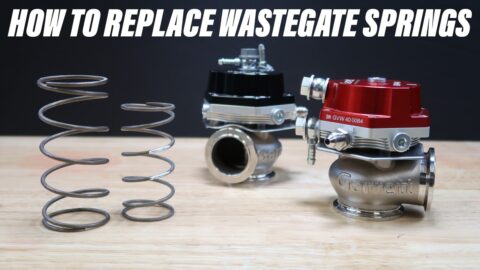Accessing the Knowledge Center effectively requires a simple, one-time registration.
What does an external wastegate do?
Garrett Vent | External Wastegates regulate turbocharger shaft speed by venting exhaust gas around the turbine stage of the turbocharger to the exhaust. A wastegate is placed on the exhaust manifold before the turbine housing inlet (Fig 1).
Exhaust air from the engine is what spins the turbo, and the faster the engine revs, the more air it flows to the turbine housing, and the faster the turbo spins.
Most applications will not use all the boosted air from the turbo and the only way to limit the boosted air a turbo produces is to slow the turbo down.
The only way to slow the turbo down is to reduce the air flow to the turbine housing by venting it out of the external wastegate.

How does the wastegate know when to open the valve and vent air away from the turbine housing? There are several ways to do this but the simplest way to illustrate this is by understanding the anatomy of a wastegate.
In the cross section in (Fig 2) you can see everything from the valve housing, to the valve and bushing, diaphragm, and springs.

The diaphragm creates an air seal between the upper and lower actuator cap because the edges are sandwiched in between. This is important because for a wastegate to vent air it needs a positive boost pressure signal from the turbo.
The boost signal port directs the positive air (boost) signal from the turbo, to the area between the lower cap and the underside of the diaphragm. Like a balloon expanding when filled with air, that area fills with air, and the diaphragm pushes up against the springs and allows the valve to open, venting exhaust air away from the turbine.
Springs sit on top of the diaphragm assembly and keep the valve closed until it reaches a given pressure. Garrett Vent | External Wastegates are calibrated with springs that equal 1 Bar | 14.5 PSI. That means it would take 14.5 PSI to fully open the valve. Wastegate springs can be changed to pressures as low as 0.2 Bar | 3 PSI or as high as 1.7 Bar | 25 PSI.
















